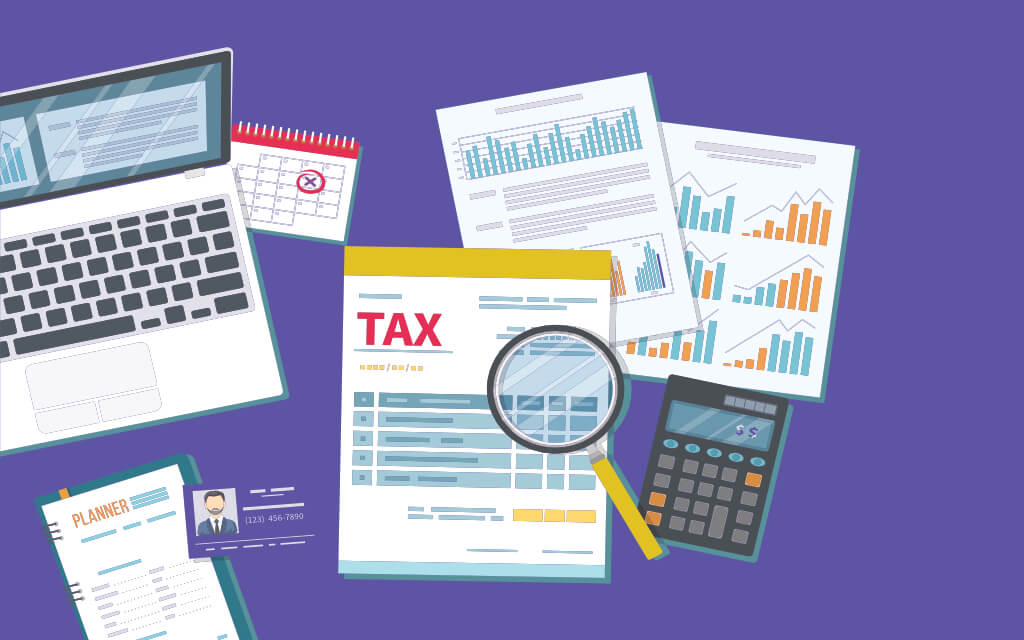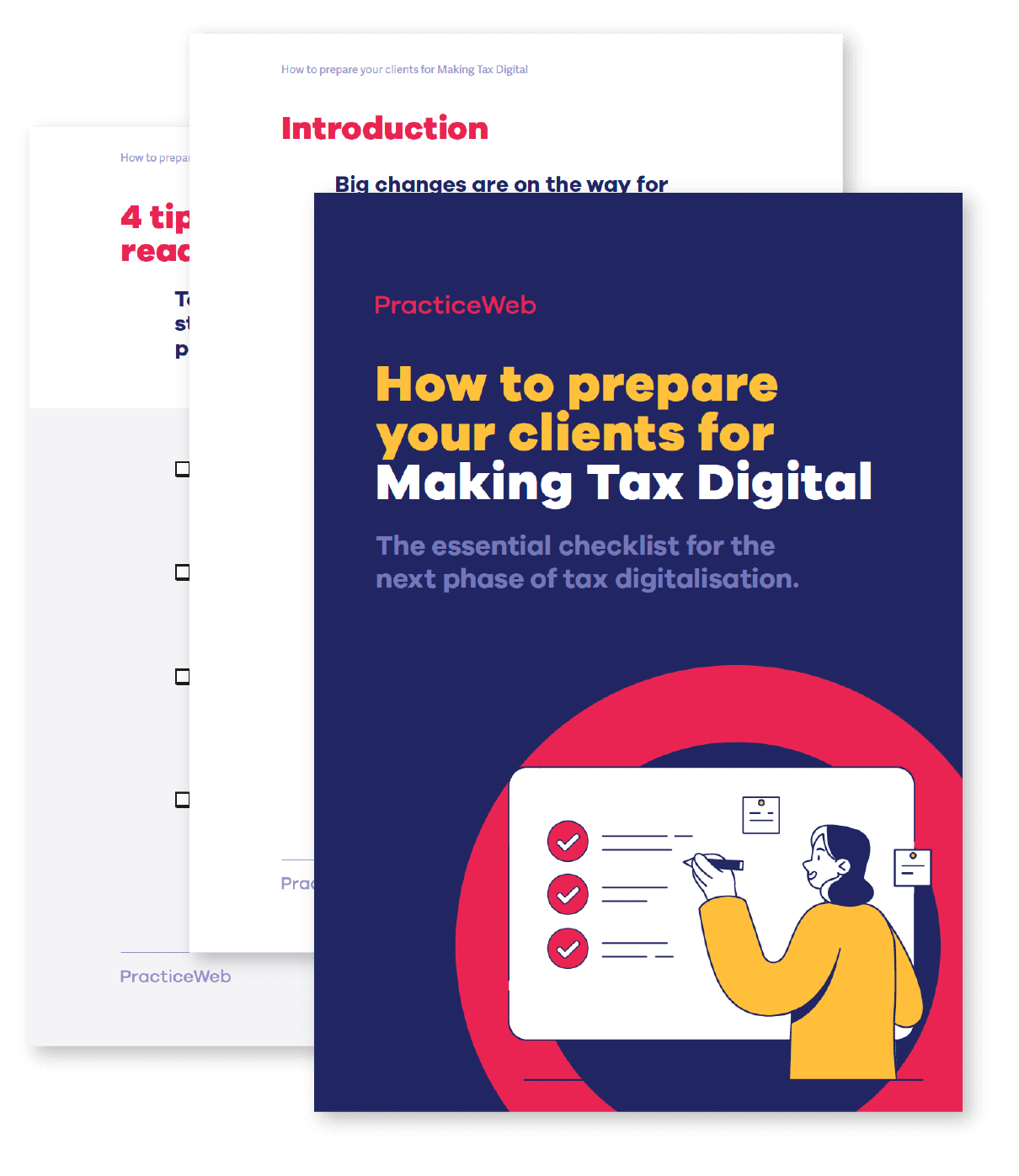As you’ll know, 2022 is the year that Making Tax Digital (MTD) will touch every VAT-registered business in the UK. In making sure your clients are ready, there is a valuable opportunity to reframe your relationship with them, growing your practice as you do.
You are bound to be aware of the timetable for MTD as it stands, but to recap:
- This April (2022), the remaining VAT-registered businesses under the £85,000 turnover threshold will have to comply with MTD VAT filing.
- From 6 April 2024, landlords and self-employed business owners with property or business income over £10,000 will have to adopt MTD in their next accounting period.
- At some point after April 2026, MTD will be introduced for corporation tax.
By planning and making sure your clients are ready at the appropriate time, you can also make sure you are ready for all the opportunities that MTD presents.
So, what’s the MTD opportunity for your practice?
There are three areas with great potential for your practice.
The first is the marketing communications opportunity over the next few years, of being able to provide useful, relevant information to existing and potential clients. Content you create will resonate with what they are hearing on the news and direct from HMRC, giving you a heightened chance to engage.
The second is the operational impact of MTD. Think about the opportunity from the efficiency gains of going digital in terms of how you present yourself to the market.
And third, the wider shift to automation in the accounting sector, and the opportunity this provides for you to develop new, higher-value offerings.
Develop a comms campaign around MTD to educate your audience
MTD is not new and neither is our advice to build up digital content on the subject. If you have already been doing this for several years, you are probably seeing the benefits in terms of SEO and client engagement.
But if you are a newer practice or you just haven’t got started with MTD content, it’s not too late. As the timeline we shared above shows, there are still years of roll-out ahead, so plenty of time to run a sustained campaign.
This will mean developing a communications and marketing plan around MTD. Think about the different stakeholders who will be drawn into its scope as the years pass, and the kind of information they will need.
Most urgent to target are the smaller VAT-registered businesses, then there’s the self-employed and landlords, and eventually limited companies.
A content hub on your website, guides and eBooks, email campaigns and even direct mail could all be in your playbook. Depending on your package with us, you may get some of this as a matter of course, and you can always talk to us about commissioning something bespoke if required.
Download the eBook:How to prepare your clients for Making Tax Digital.
The essential checklist for the next phase of tax digitalisation.
Assess the operational impact of going digital
After two years of MTD for larger VAT-registered businesses, you’ll have a good idea of the impact that MTD has had on your practice.
Has it been a matter of short-term pain for long-term gain? Research by QuickBooks found that accountants and bookkeepers were on average having to spend 55 hours per SME client getting them ready for MTD. However, in the survey, 75% of these accounting professionals said the long-term benefits more than compensated for the original cost.
Part of the driving force for HMRC implementing MTD is to increase tax revenue through reducing error. As human error is stripped out of your practice (everyone is susceptible to it, especially where spreadsheets are involved), you should see efficiency savings and improved relationships with your clients.
You will probably already have found that to make MTD work in your practice, you needed to introduce new skillsets – technologists who can traverse the software which underpins MTD. Maybe you still have a bit to do in this area, but acquiring this resource and making it available to your client base will become a major, if not essential, asset.
Develop new higher-value offerings
And that brings us onto the third opportunity: developing new, higher value offerings. MTD is only accelerating the adoption of automation in accountancy, which saves expensive staff from spending time doing tax compliance.
The good news is, though, that while software is doing the heavy lifting of compliance work, there is strong demand amongst SMEs for higher-value advisory work that only experienced human professionals can deliver.
Indeed, our own research in 2021 found that 63% of SME owners had regretted making a business decision without speaking to an accountant first, that 61% saw their accountant as their main source of advice (with 40% currently receiving it from elsewhere), and that 57% would pay more than £1,000 a year for advice, some considerably more.
We think accountancy practices that can bring more advisory services into their offering through well-considered packages will do well in the post-MTD landscape.
More support from PracticeWeb
Throughout the MTD roll-out, we’ll be on hand to provide advice on the opportunities for accountancy practices, and to work with you on making the most of them.
We have updated our guide; ‘How to prepare your clients for Making Tax Digital’ to help you to make sure that your clients are prepared when the time comes.
Download our guide which includes a four-point checklist to help you plan your firm’s MTD content strategy in the lead-up to 2024.
If you are already on one of our packages, you’ll know that we provide monthly content support appropriate to your size of practice, which you can tailor as much or as little to MTD depending on the business objectives of your firm.
And if you have a specific piece of content which you would like to commission, or you want help developing a bespoke strategy, please get in touch.





